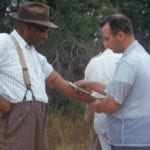 Mysteries
Mysteries  Mysteries
Mysteries  History
History 10 Surprising Stories About the Texas Rangers
 Humans
Humans 10 Philosophers Who Were Driven Mad by Their Own Theories
 Miscellaneous
Miscellaneous 10 Video-Game-Worthy Weapons and Armors from History
 Weird Stuff
Weird Stuff 10 Psychics Who Accurately Predicted Wartime Events
 The Arts
The Arts 10 Pieces of Art Inspired by a Broken Heart
 Health
Health 10 Science Fiction-Sounding New Medical Treatments
 History
History 10 Surprising Facts About the Father of Submarine Warfare
 Space
Space Ten Astonishing New Insights into Alien Worlds
 Weird Stuff
Weird Stuff 10 Bizarre Summer Solstice Rituals Still Practiced Today
 Mysteries
Mysteries Top 10 Haunting Facts About the Ghost Ship MV Alta
 History
History 10 Surprising Stories About the Texas Rangers
 Humans
Humans 10 Philosophers Who Were Driven Mad by Their Own Theories
Who's Behind Listverse?

Jamie Frater
Head Editor
Jamie founded Listverse due to an insatiable desire to share fascinating, obscure, and bizarre facts. He has been a guest speaker on numerous national radio and television stations and is a five time published author.
More About Us Miscellaneous
Miscellaneous 10 Video-Game-Worthy Weapons and Armors from History
 Weird Stuff
Weird Stuff 10 Psychics Who Accurately Predicted Wartime Events
 The Arts
The Arts 10 Pieces of Art Inspired by a Broken Heart
 Health
Health 10 Science Fiction-Sounding New Medical Treatments
 History
History 10 Surprising Facts About the Father of Submarine Warfare
 Space
Space Ten Astonishing New Insights into Alien Worlds
 Weird Stuff
Weird Stuff 10 Bizarre Summer Solstice Rituals Still Practiced Today
10 Disturbing Historical Medical Experiments
Unfettered medical experiments are the stuff of nightmares as often seen in hack-and-slash horror movies. Little is known, however, about how much pain and suffering has been caused over the centuries at the hands of science and supposed progress, but stories do exist.
Some medical experiments, particularly from the 19th and 20th centuries, seemed harmless or even silly knowing what we do today. Other experiments, however, were enough to make a normal person sick.
Experiments on children, animals, and the poor are seen as particularly evil because of their defenseless nature. There were no laws a century ago to protect these victims—or anyone else—from doctors and surgeons who wanted to play God with the lives of the living and, strangely enough, with the dead.
10 Children Of The Poor Were Inoculated

In 1908, doctors were frantically trying to find a cure or prevention for tuberculosis. At a children’s hospital in Washington, DC, TB “experts” decided to experiment on children who came from poor families. They inoculated 10 children with “bacilli of tuberculosis and cultures of Koch’s tuberculin without the knowledge or consent of the parents or guardians of the children.”
When discovered, the doctors refused to release the names of the children on whom they had experimented because “their parents belong to the ignorant class and might make strenuous objection to such experiments.” While no one denies that there was an obvious need for a solution to the TB dilemma, the fact that doctors felt the need to experiment on children of the poorer classes without their parents’ knowledge or consent was a violation of people’s individual rights and can easily be viewed as an evil act.
Often called the Great White Plague, tuberculosis claimed about 110,000 people yearly in the United States during the early 1900s. From 1908 to 1921, two French bacteriologists worked on a vaccine to put an end to TB.
9 Cholera Beds

The United States was not the only country trying to learn more about infectious diseases, how they were spread, and how to put a stop to them. In 1871, Russia was working on finding out just how cholera was spread while also exploring the power of thought on the health of a person (a hot topic back then).
Using murderers already in their prison system, they placed four of the men in beds where people had died of cholera. After sleeping in the beds, the men showed no signs of the disease. Next, the men were told to sleep in four different, clean beds. This time, the men were told that the people who had slept in those beds before them had died of cholera. It was reported that three of the four men died of cholera within four hours.
During the cholera epidemic in the 19th century, doctors soon discovered that cholera was not transmitted from person to person. Instead, cholera is transmitted through unclean drinking water. This is why the prisoners did not show any signs of the disease after sleeping in contaminated beds.
8 Happy Thought Horseshoes
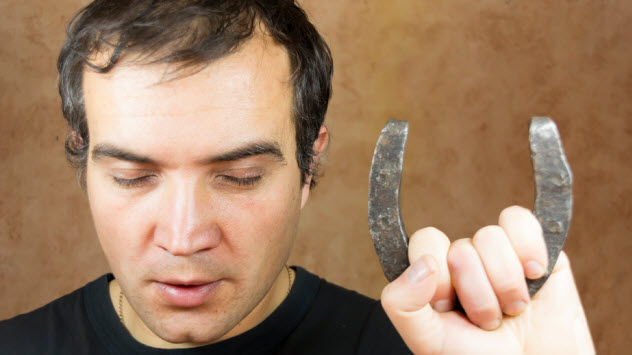
History is full of wacky experiments and strange attempts at cures. In 1895, newspapers in the United States were abuzz with the latest medical experiment out of Paris involving happiness. A Parisian doctor believed that happiness could be transferred from one person to another.
To prove his theory, he had happy people wear a horseshoe on their head. The belief was that they would “magnetize” the horseshoes with their happy thoughts. The happy horseshoes were then given to people suffering from melancholy, and these people were made to wear them.
The doctor believed that this would transfer the happy thoughts from the horseshoe to the wearer. The article states that the doctor had everyone wear the horseshoes on their heads and not their hearts so that the horseshoe would be a “visible mind cure in active operation.” It is more likely that the horseshoes were a visible power of suggestion that may or may not have worked on certain people.
7 Struck By Lightning And Then Grounded

In a classic case of “who needs enemies when you have friends like this,” one man was unfortunate enough to have friends who thought themselves capable of conducting their own medical experiment. In 1881, the man was struck by lightning and left paralyzed.
His friends came to believe that he was paralyzed because he still held the electric charge from the lightning in his body. “His friends reasoned that if Earth would receive electricity from the buried end of a lightning rod, it would in the same manner draw out the charge with which they supposed him to be filled.”
Like a bad Monty Python skit, his friends decided to dig a large hole and bury the paralyzed man in the ground up to his chin. Unfortunately, his friends’ logic was severely flawed and the poor man died in the ground. There is no mention of charges being filed against his friends.
6 Poisoned By Suggestion

Here again, we have a case of the medical class testing out the power of suggestion in what could only be seen as a cruel joke by today’s standards. A report was published in 1904 about an incident that happened in Havana during the Spanish-American War in 1898. According to the story, a surgeon and a young lieutenant got into a bit of a tiff and a duel was suggested. The method of “fighting” was decided by the surgeon to be “two pellets, the one harmless, the other containing prussic acid in concentrated form.”
Two other surgeons made the pellets and returned to the area where the duel was to take place. They announced, “The surgeons who have prepared them have surrounded the fatal one with wintergreen.” The dueling surgeon ate his pellet, knowing full well that he had nothing to worry about.
Then the lieutenant placed his pellet in his mouth and tasted wintergreen. The young man’s face went pale, believing that he had just consumed poison. One of the witnessing surgeons pressed on with the ruse, “If you have anything to say, I should advise you to say it quickly.”
The lieutenant fell to the ground, his legs failing him. He tried to speak his final words, but a surgeon told him that his tongue would soon be paralyzed. The young man lost his power of speech. Just as the surgeons thought that the young man was about to expire, they called for whiskey and let the poor man know that he did not swallow any poison and that it had all been part of a medical experiment to see if someone could be killed by the power of suggestion.
5 Electric Dead Heads
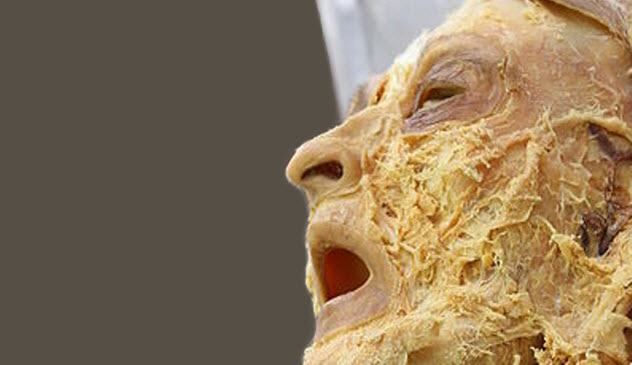
What is most surprising about some of the medical experiments conducted over 100 years ago is not only how gruesome the experiments were but that they were described in detail in the newspapers. A report published in 1866 details an experiment done in France. Four men mutinied at sea and were brought back to land to be executed.
Immediately after they were beheaded, their heads and bodies were handed over to surgeons for experimentation. The description of their experiments reads:
Next to the bodies, rolled up in napkins, were four livid heads. The work of dissection commenced instantly. The nerves quivered, and the flesh was still warm. The continual contractibility of the heart was proved, as well as in the aorta, where sensitiveness was extreme.
The contractibility was manifested on simply touching the part, and, of course, was still more apparent when subject to electric currents. The muscular contraction was so intense that, even after 20 minutes, one of the doctors, on applying an electric current, made the four heads grimace in the most horrible manner.
Oillie’s face especially assumed the most frightful expression. A pencil was placed between Oillie’s teeth; it was bitten through and smashed as though it was made of glass.
4 Experimentation On Orphaned Children
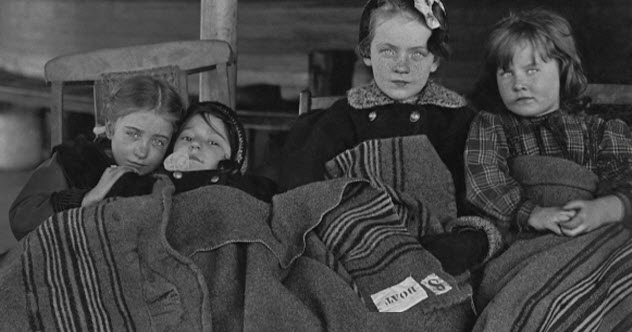
The Washington Herald lit up the pages in 1913: “Orphan Children Made Subjects for Vivisection.” The report gives details on how orphaned children were used as test subjects in different hospitals around the world.
Some children were given syphilis injections and other diseases in the name of science and progress. A Japanese doctor was cited as having experimented on 146 orphaned children obtained through the hospitals.
At a hearing before the International Congress, “[a] graphic portrayal of subjects of vivisection, both human and animal, showing them in their various stages of torture under the scalpel and other instruments of vivisection, was the feature of the evening session which was devoted to a series of motion pictures.”
At the time, no laws existed to protect orphaned children from being used for medical experiments. It was stated that “medical men experimented only on poor people whose lives are worth nothing.” While the International Congress agrees that “most of the vivisection practiced today is perfectly barren work and incurs useless torture,” the group decided to keep watchful eyes on the experimenting doctors instead of abolishing the practice altogether.
3 Sweat Injections
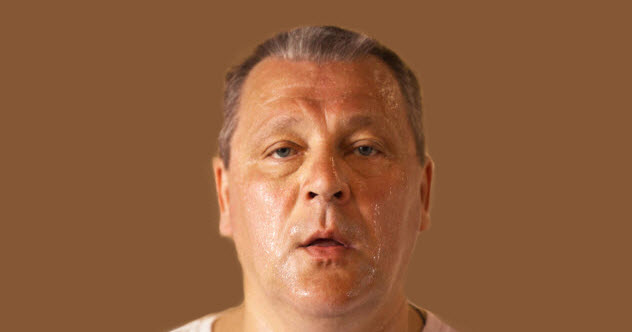
Is sweat really that bad? One bacteriologist thought so in a newspaper article from 1898. He placed his test subject in a steam bath, and afterward, he scraped off the sweat to test it. He found that the sweat was teeming with germs and came to the conclusion that sweating released bacteria that was inside the body.
He believed that an accurate diagnosis could be made of the patient’s illness by making the patient sweat. The article goes on to state that “small animals are readily killed by subcutaneous injections of perspiration collected after violent exercise.”
Contrary to the old belief that sweat is full of germs, new research shows that the body releases an antibiotic called dermcidin in the sweat. While this discovery is fairly new, scientists have found that dermcidin can kill E. coli, Staphylococcus aureus, and other harmful bacteria.
2 Grafting Animal Glands Onto Humans
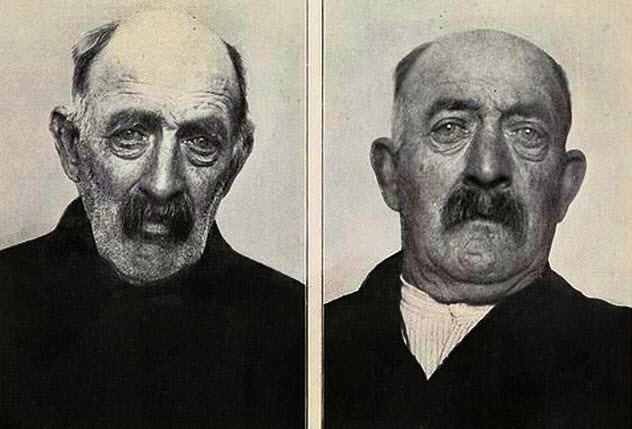
In the New York Tribune newspaper, a curious article was published in 1921 entitled “Japanese Medical College to Experiment With Glands.” At first glance, that sounds safe enough, but further reading tells the reader that “Japanese physicians and doctors are to undertake experiments in grafting animal glands into the human interstitial gland to produce renewed vitality for men and women in their dotage.”
Further research revealed that in the early 1900s, doctors and surgeons worldwide were experimenting with grafting animal glands onto people. The idea behind the whole thing was to prevent aging and to even increase sexual drive. The images above show a patient before a rejuvenation graft (left) and one year afterward (right).
Eventually, doctors came up with a special serum made from a mixture of animal sex glands that was injected into aging men with the desired result being similar to today’s Viagra. There were even reports of doctors grafting animal testes onto aging men, and in one effort to keep men young, sperm was directed back into the body instead of allowing it to escape during ejaculation.
1 Executed Man Brought Back To ‘Life’
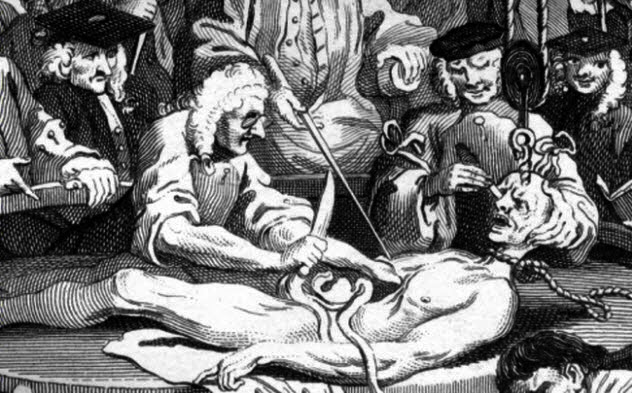
It was a gruesome find, and the 1879 article was enough to make anyone queasy. Entitled “Died Twice,” the article dared the reader to read on with “The Dead Man Made to Cough, Roll Its Eyes, and Moan.”
As the story goes, Merrick the wife murderer was hanged and his body handed over to the Indianapolis Medical College for medical experiments. The professor heading the experiments addressed his class by saying, “Gentlemen, this subject affords an opportunity of showing how far vital action may be suspended and again restored.”
Sure enough, air was pumped back into the dead man’s lungs with a bellows apparatus. The coagulating blood was removed and replaced with a strange mixture of sheep’s blood and milk that was heated up to 38 degrees Celsius (100 °F).
Wires attached to a battery were inserted through two holes drilled in the skull. Assistants manually reanimated the dead body. The professor became excited when he was able to feel a pulse in the dead man, and the students witnessed the swollen eyes of the dead man “roll in their sockets.”
Then the professor and assistants turned off all the apparatus that they had used to animate the corpse. They found that the pulse became erratic, but the pupils continued to respond to light and shade.
Suddenly, the “heart beat more steadily, the face became of better color, and the chest jerked as if there was a desire to cough.” The professor began drilling more holes in the body’s skull and “[touched] the brain with the galvanic points, which caused the legs to jerk, the hands to clench, the eyes to roll, open, shut, and the tongue to protrude.”
When the professor was finished, all the apparatus was removed from the body, but the body continued to cough, roll its head, and convulse. The body experienced a second death some minutes later.
Elizabeth spends most of her time surrounded by dusty, smelly, old books in a room she refers to as her personal nirvana. She’s been writing about strange “stuff” since 1997 and enjoys traveling to historical sites.
